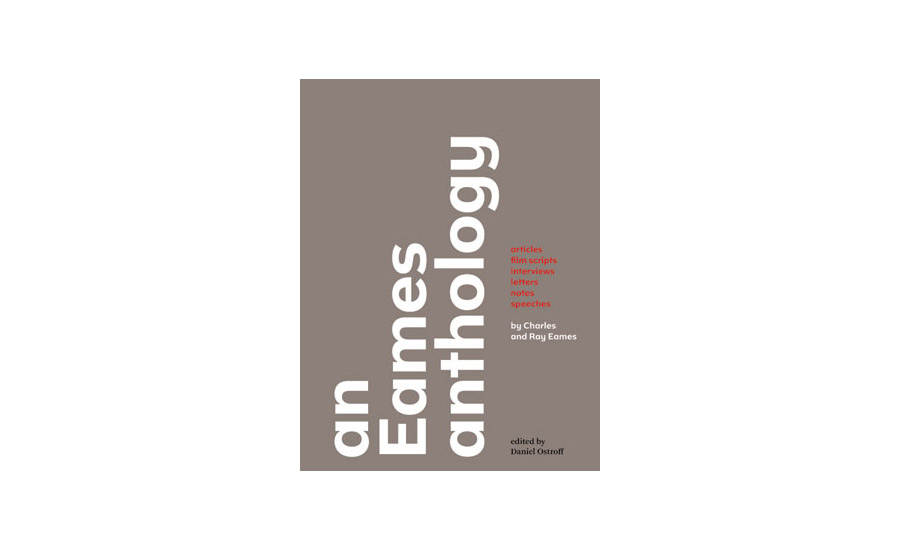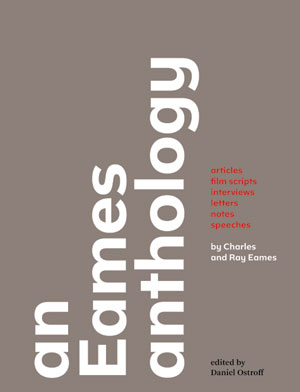Designing a chair is an eternally tempting but precarious prospect: the humble seat, legs, and back must resolve the essential challenges of structure, function, form. And the end result is inevitably compared to a canon of predecessors. How is it, then, that Charles and Ray Eames produced a number of iconic chairs, while also leaving their mark as architects, filmmakers, educators, and industrial designers? A new collection of historical materials, titled An Eames Anthology, attempts to delve into the Eameses' body of work to discover the methodology and ideas that drove their designs. Edited by writer and curator David Ostroff, the book contains a range of texts including letters, interviews, lectures, and more. Some documents are previously unpublished; Ostroff did extensive research and editing to discover and distill the anthology's contents.
While heavily text-based'relying on the Eameses' words to best communicate their thoughts'the book includes ample historic photography and doesn't feel dense. It covers the couple's work from 1941, when they met at Cranbrook, to 1986, not long before Ray died. But the Eameses are well known to designers everywhere, so the book raises the question: is there new information to be gleaned from these documents?
Ostroff does not investigate each Eames creation but rather focuses on the how and why of their practice, slowly building a surprisingly consistent portrait of the two designers' collective mind-set. While these texts do touch upon the breadth of the Eameses' work'furniture, architecture, media, and more'they do so at vastly different levels of resolution. For instance, a few lengthier documents delve into the details of their design process, right down to how they selected a particular material to serve as a shock absorber on a plywood chair. Other texts are more conceptual; in one interview Charles explains the relationship between art and design: 'One could describe design as a plan for arranging elements to accomplish a particular purpose . . . It may, if it is good enough, later be judged as art.' Some lessons are more quirky and idiosyncratic, such as one lecture that briefly explains the unique qualities of driftwood as 'the result of elements working with a consistent attitude on a given material,' so that it becomes a wonderful new thing.
For those already familiar with the Eameses' lectures and writings, small tidbits do emerge that could only be gleaned by reading these otherwise dispersed texts. For instance, by virtue of repeated mention, it becomes clear that Leonardo da Vinci was an often-present figure in Charles's thoughts. Similarly, the challenge of creating a drinking vessel'in terms of fluid dynamics, thermal properties, texture, fit in one's hand, etc.'is a frequent trope for Charles in defining a designer's role. As these examples indicate, Ray's voice appears infrequently in the anthology, despite her essential and omnipresent role in the couple's work. That aside, An Eames Anthology crafts a substantial portrait of the designers' perspectives, ideas, and methodologies.



Post a comment to this article
Report Abusive Comment